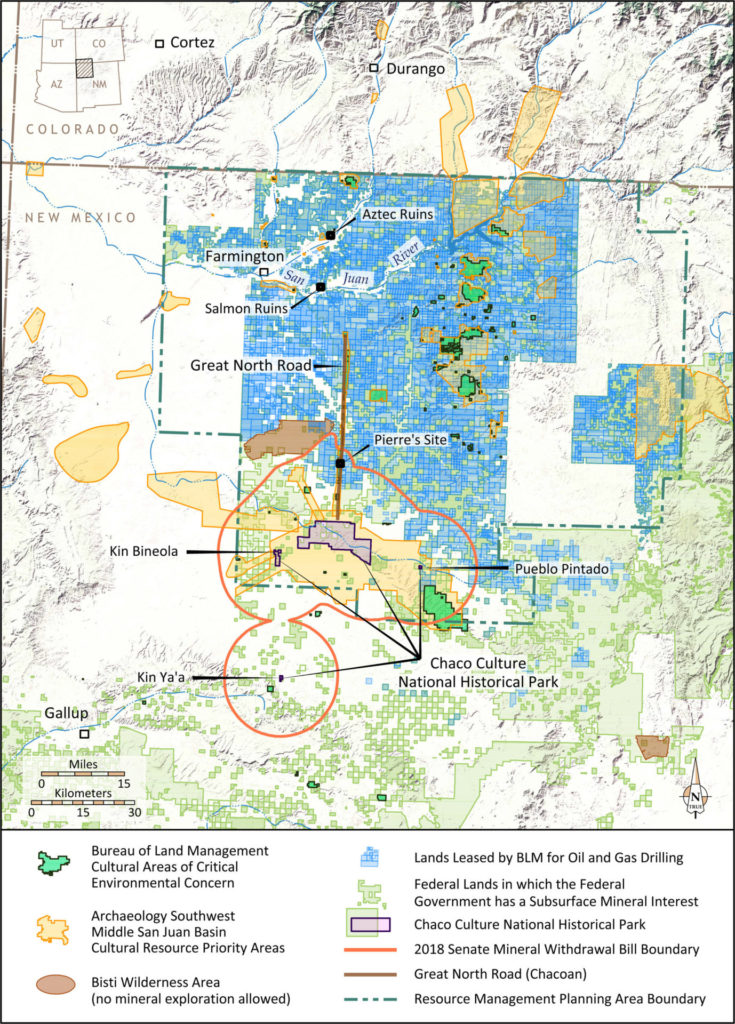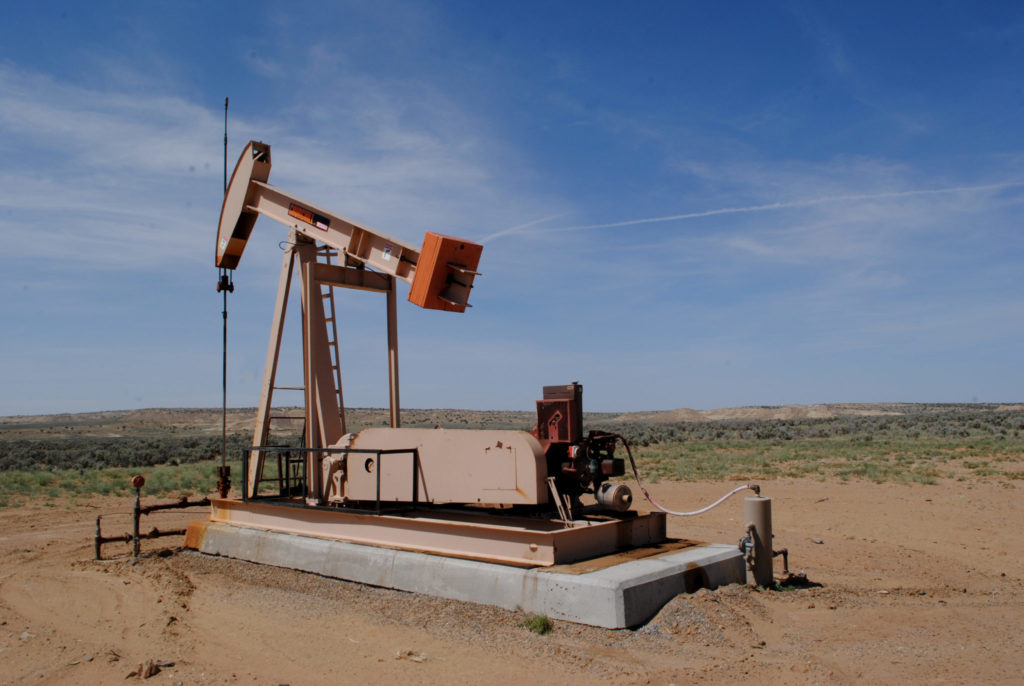- Home
- >
- Preservation Archaeology Blog
- >
- Why Protect a 10-Mile Zone around Chaco Culture Na...
(December 17, 2019)—Recently, there has been some debate about the value of protecting a 10-mile zone around Chaco Culture National Historical Park (henceforth Chaco or Chaco Park) and two of its outlying communities.
Some have suggested that a smaller zone of protection, perhaps 5 miles in radius, would provide sufficient protection for the ancient Chacoan-Puebloan communities that lie outside the Park’s boundary. This idea is mistaken. In this post, I will make the case for protecting the significant and fragile ancient communities that lie within 10 miles of Chaco’s boundary.

Before discussing the ancient sites and communities that are currently at risk, I want to first provide some background information. The concept of a 10-mile protection zone goes back to at least 2015, in discussions with a variety of partners working in the area.
In 2018, the concept was greatly advanced with a U.S. Senate bill introduced by New Mexico’s Senators Tom Udall and Martin Heinrich. Although the 2018 Senate bill did not advance, it built momentum for the idea. In 2019, the U.S. House of Representatives passed H.R. 2181, the Chaco Cultural Heritage Protection Act of 2019. A companion bill was introduced in the Senate (S. 1079; essentially the same bill from 2018). The Senate bill is currently in committee and it’s ultimate fate is unclear.
The basis for protecting a 10-mile zone around Chaco Canyon derives from two primary facts: 1) this area is much less developed and more pristine than the area beyond 10 miles; and 2) the area contains 12 significant and largely unprotected Chacoan great house communities with hundreds of sites.
From the air, it is clear that at about 10 miles from the Chaco Park boundary line, the Greater Chaco Landscape begins a serious transition. South of the 10-mile line, the landscape is relatively pristine. Certainly, there is limited development within this zone—limited oil-gas facilities and some power lines and pipelines that cross the area.
The 10-mile protection zone is, however, largely unimpacted by oil-gas development. North of the 10-mile line, the landscape begins to change, and shows the effects of industrial development of the oil-gas resources that lie beneath the surface.
Twelve significant ancient Chacoan-Pueblo communities lie within the 10-mile zone. These include the Bis san’ni Community, located a few miles northeast of Chetro Ketl, and the Pierre’s Community, located up the Great North Road, at about the edge of the 10-mile protection zone. A linear community lies along the Ah Shi Sle Pah road that originates at Pueblo Alto and trends to the northwest for more than 20 kilometers (14 miles). Much of this ancient community lies within the 10-mile protection zone. Additional Chacoan communities with the 10-mile zone include Casa del Rio, Bee Burrow, Escavada, Greasy Hill, Greenlee, Indian Creek, Mesa Tierra, Quartos Payasos, and Tse Lichii’. None of these communities will be protected if the 10-mile zone is reduced to 5 miles.
Chacoan Communities in the 10-Mile Zone
The ancient Pueblo community at Bis san’ni comprises at least 20 sites in a roughly 8 km square or 2000-acre area. The community lies about 5 miles northeast of Pueblo Bonito. The core of the site is a Chaco great house with about 40 rooms and 5 kivas. Pueblo sites in the community around Bis san’ni contain about 50 rooms and several kivas. In addition, the community contains resource procurement sites and other sites of limited use.
The Pierre’s site complex is the largest community on Chaco’s Great North Road. Pierre’s contains three small Chacoan great houses with perhaps 50 total rooms, single and second-story, and several kivas. The community also incorporates a watchtower-like feature called El Faro (the lighthouse). In the community around Pierre’s core, at least 60 rooms are present at 10 small pueblo habitation or field house sites. Additional sites include artifact scatters, the Great North Road, and rock features.
Mesa Tierra is a Chacoan great house with 30 rooms and 5 kivas located southwest of Pueblo Bonito. The site was built atop a mesa and includes a small community of surrounding sites with perhaps 20 additional rooms.
Casa del Rio lies along Chaco’s West Road and comprises a great house with perhaps 140 rooms and several large, dense midden areas. An ancient reservoir lies south of the great house. The community around Casa del Rio is largely unknown, due to the lack of archaeological survey.
Greenlee lies southeast of the Chaco park boundary and consists of a Chacoan great house with 15 rooms and one kiva. It sits atop a low mesa. A Chacoan road segment runs to the east of the site. A probable community of small sites surrounds Greenlee, but its nature is unclear due to limited archaeological investigation.
Bee Burrow is a small Chacoan great house with 11 rooms and 2 kivas located south of Pueblo Bonito and the Park boundary. Chaco’s South Road passes by the site to the east. Petroglyphs are present along a cliff face southwest of the great house. The community surrounding Bee Burrow is poorly understood but contains dozens of small pueblo sites and perhaps 500 total rooms.
The Indian Creek community lies west of Chaco comprises two small Chacoan great houses—Casa Cielo and Casa Abajo—and a community of 20 small pueblo sites with more than 100 rooms.

One thought on “Why Protect a 10-Mile Zone around Chaco Culture National Historical Park?”
Comments are closed.

AMERICAN archaeological sites are protected for now-living and future residents to appreciate the life ways of previous users of these lands. So little is asked to be protected. The appetite needs of “resource” seekers can be met by tapping the bulk of regional lands. Our every prehistoric site need not be exposed to industrial extraction and subjected to avoidable harm. Ten mile protections around otherwise already endangered sites, as seen against the ocean of exposed extraction areas, is the most modest of proposals.